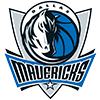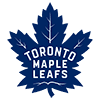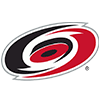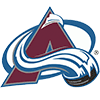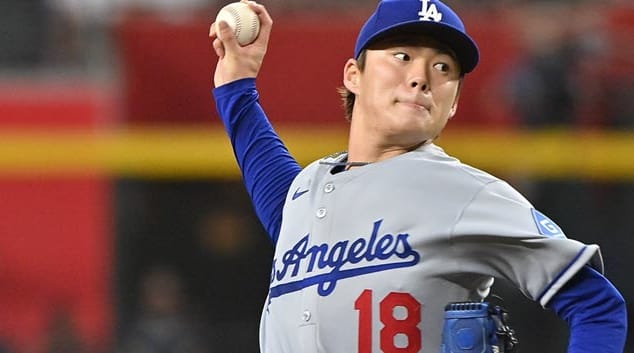In last week's article, I listed a number of American League players that could see time with their respective big league clubs this coming season.
This article will focus on National League prospects that have a chance to play in the big leagues at some point in 2011.
While we won't see any Stephen Strasburg or Jason Heyward type players making major league debuts, we still have a nice crop of potential impact players to target for fantasy teams.
Rookie status is granted to a player with fewer than 130 big league plate appearances, no more than 50 innings pitched or no more than 45 days on a big league roster. Some of the players below were promoted to the big leagues at some point last season.
Many of the names below are players I profiled in my weekly columns in the past couple of years. Now, they are literally knocking at the big league door. Some will break it down. However, I can't honestly say I agree with the written glowing evaluations and rankings I have read by others regarding some of the players noted below. In fact, I have reservations about a few. That being said, they still may help fantasy teams and their own organizations. The degree and depth of the help is the area I question.
You will see many familiar names. Names that have received lots of ink. I have also tried to include some less familiar guys flying under the radar. Guys trying to
In last week's article, I listed a number of American League players that could see time with their respective big league clubs this coming season.
This article will focus on National League prospects that have a chance to play in the big leagues at some point in 2011.
While we won't see any Stephen Strasburg or Jason Heyward type players making major league debuts, we still have a nice crop of potential impact players to target for fantasy teams.
Rookie status is granted to a player with fewer than 130 big league plate appearances, no more than 50 innings pitched or no more than 45 days on a big league roster. Some of the players below were promoted to the big leagues at some point last season.
Many of the names below are players I profiled in my weekly columns in the past couple of years. Now, they are literally knocking at the big league door. Some will break it down. However, I can't honestly say I agree with the written glowing evaluations and rankings I have read by others regarding some of the players noted below. In fact, I have reservations about a few. That being said, they still may help fantasy teams and their own organizations. The degree and depth of the help is the area I question.
You will see many familiar names. Names that have received lots of ink. I have also tried to include some less familiar guys flying under the radar. Guys trying to make the club and prove they belong. I think each person below will see playing time in 2011.
Aroldis Chapman, P, Cincinnati Reds
We certainly got a taste of what Chapman brings to the game with his 2010 late season introduction to the major leagues. This season the Reds again plan to use him out of the bullpen in a setup role. That can change quickly if closer Francisco Cordero implodes or gets hurt. However, this is Cordero's free agency year. It seems that Chapman will inherit the closer's role or slide into the rotation next season. Much will depend upon how he harnesses his command.
Chapman has a fastball that sits in the mid-90s and a wicked knee-buckling slider as a complementary pitch. He still needs to develop a deeper repertoire beyond the fastball and slider. Against San Diego last season, the Cuban born lefty touched 105 mph on the radar gun. Without question, he is one of the best prospects I have seen since the days of Sudden Sam McDowell and Herb Score. If he refines his command and if he gets the chance to pitch in the rotation, he may be spoken of in the same conversation as Sandy Koufax; that's how good I think this guy can be. Grab him in your draft and enjoy the strikeouts he'll bring. If it's a keeper league, congratulate yourself and laugh all the way to the fantasy bank.
Freddie Freeman, 1B, Atlanta Braves
Freeman appears to be the starting first baseman in Atlanta this season. Other than the fact there is little competition at the position, the Braves' brass thinks of Freeman as a potential superstar. They really like his short uppercut swing, and are looking forward to having him in the lineup with Heyward for a long time. I'm not as excited about Freeman, however. I think he'll be a good player, but I don't think he'll give his team the power and run production needed from a corner infielder. He'll hit for average, but I don't think power will be a major component of his game. At least not for the first couple of seasons.
Freeman left the Arizona Fall League early in the season with a thumb injury. He still isn't 100 percent healthy; any hand injury concerns me. As a matter of fact, Heyward is still bothered by his thumb injury from last season. So beware of those issues when you draft both of those players.
Craig Kimbrel, P, Atlanta Braves
Try this on for size – 40 strikeouts in 22.2 innings pitched in 2010. I'll take that any time. So will the Braves, as they see Kimbrel as a great option to close games. Kimbrel's strikeout rate is generated from a mid-90s fastball that he uses to dominate hitters. One key to Kimbrel's success is a plus-slider that keeps hitters off balance at about 10 mph less than his fastball. Adjusting to the change of location and reduction in speed is a difficult task for the best of hitters. While Kimbrel can become wild at times (16 walks in those 22.2 IP) he still should be seen as a high K/9IP pitcher with a chance to rack up beaucoup saves. The only obstacle to fantasy success is teammate Jonny Venters, a solid lefty with a chance to share the save chances with the right-handed Kimbrel.
Domonic Brown, OF, Philadelphia Phillies
The loss of Jayson Werth to Washington should pave the way for Brown to take over right field in Philadelphia, right? Not so fast. The possibility remains that Brown could start the season in Triple-A with Ben Francisco and Ross Gload sharing right field in a platoon system. That's why it is important to watch the spring training trends of the Phillies.
Brown is a slender bodied 6-foot-5 23-year-old with an uppercut swing and major speed. He should be a quality gap hitter with the promise of power to come when his body fills out and he adds muscle and definition. For now, however, I see him struggling with high quality sliders down and away. I see a need for improved plate discipline and improved selectivity. Once his pitch recognition improves and he cuts down his long and loopy swing, the results will improve. I see Brown as a long-term keeper but as a bench player if drafted for 2011 only. He'll get at-bats and show his worth as the season progresses. If he shows the numbers, he can also be moved into your lineup. But beware and be patient. And remember a couple of key facts. He's still only 23 and the Phillies have resisted trading him in every major blockbuster they've been involved in the past few seasons. That speaks volumes.
Brandon Belt, 1B/OF, San Francisco Giants
If the Giants did not have a Championship to defend, I think Belt would be the starting first baseman in San Francisco. They did win, however, and Aubrey Huff has been re-signed to play first base. I believe the changes Belt made in his stance and swing have improved his chances for sustained success. He has enough to offer the Giants to force them to look at him as an outfielder in addition to playing first base (Huff could also move to left field and leave first to Belt). He will provide batting average, home run power and the ability to drive in runs. It won't hurt that Belt is an excellent defender with good instincts and a strong, accurate arm. I am a real believer in Belt's power; he is so big and strong that his presence at the plate is enough to intimidate even the most seasoned pitchers. His stock has soared in less than one year. Buy with confidence and give him a chance to learn big league pitching. When the adjustment period is over, Belt will become a household name.
Cory Luebke, P, San Diego Padres
Luebke got a taste of big league life with the Padres last season. He is a left-handed starter with back of the rotation potential. Scouts I have spoken with agree that he has to return to inducing groundballs in order to reach his ceiling. His three-pitch repertoire of fastball (87-92 mph) slider and changeup all are of average major league quality with none being exceptional. Luebke has the luxury of being able to pitch at Petco, a pitcher's paradise. In his first taste of the big leagues, Luebke started three games, relieved in one and threw 17 innings. He gave up 18 hits and walked six, giving himself plenty of chances to pitch out of trouble. Working on his control and continuing to refine his pitches will help him adjust to major league hitting. Luebke did strike out 18 in his 17 innings, showing signs that his stuff is legitimate and bringing hope to the Padres about his potential to help them in the starting rotation. At 26, he is at the age where he should be refining his mechanics and contributing to his club. I like his chances to succeed at the back end of the rotation. He could be a very good late-round addition to your team.
Mike Minor, P, Atlanta Braves
When I saw Minor in the 2009 Arizona Fall League he had just signed his first professional contract out of Vanderbilt. The lefty had me wondering why the Braves were so high on him, signing him as their first-round selection. Minor didn't throw hard and he looked intimidated by the prospects with wood bats in their hands.
But that was then and this is now. Minor has added velocity to his fastball that allows his changeup to become an even more special pitch. To me it's the best pitch in his repertoire. I would say his curveball is mediocre, at best. At least he has three solid pitches to use in any sequence, which is a requirement as a starter. Minor has excellent pitching mechanics and a very good mound presence.
While I think pitchers with above average control and command like Minor have the potential to be special, there is something about him that gives me great pause. Maybe I don't think he's special. Maybe my head and heart tell me he's very average, at best. That he isn't a true blow 'em away, off the charts No. 1 draft choice. For me, he isn't a top of the rotation starter. I think he's very hittable. Even with the good movement on his fastball, I see him getting hit and hit hard. I hope I'm wrong. I think he will need time to learn how and when to throw each pitch. I think he will be more of a finesse pitcher than the Braves want him to be. He's not going to blow guys away. I see him "growing into the job" of being a starting pitcher. But I see it taking time. Lots of time.
Danny Espinosa, 2B, Washington Nationals
Espinosa really doesn't get as much attention as he might deserve. Originally thought to be a candidate for shortstop by many, the Nationals have turned to the switch-hitting Espinosa to play second base with the presence of Ian Desmond on their club. It is likely Espinosa will bring more power to the position than people expect.
In his debut last season, Espinosa hit six homers in only 112 plate appearances. While he hit just .214, he flashed the ability to hit for power. In addition, while known to be able to steal bases, Espinosa didn't steal in his first taste of big league life with Washington. Another positive quality about Espinosa at the plate is his willingness to accept a walk. The ability to get on base in that manner will give him more chances to steal. However, if your league punishes strikeouts, Espinosa may hurt you. Although he has outstanding bat speed, he has shown a propensity to strike out, and often. Improved contact on pitches he can drive will be an important component to improving his game. He could be a good second-base sleeper to remember on draft day.
Dillon Gee, P, New York Mets
There isn't much buzz about Gee because all of the talk surrounding the Mets this offseason has centered on their money woes. However, Gee is a right-handed control pitcher that might just sneak into the rotation at some point during the season.
The Mets have signed Chris Young to assume a role in the back end of their rotation. However, Young is coming off another season with endless arm injuries and can be considered a huge question mark for 2011. They also signed a reclamation project in former Brewers lefty Chris Capuano. And of course, one of their biggest financial mistakes, Oliver Perez and his endless money draining contract looms large over their bloated payroll. The guess here is that the Mets will need Gee sooner than later. What does he bring? Well, a mid-range sinking fastball that should hit 90 or 91 mph regularly, a mediocre slider, a mediocre curveball and a fairly good changeup. He mixes those four pitches well and changes eye levels of hitters. The sinker induces some groundballs and he looked fairly capable in five major league starts in 2010. I trust his command and his control. However, because he's usually near the plate, I think his fastball, slider and curve are all very hittable. He's not overpowering by any means but he provides some depth to the back end of the Mets' rotation. I'm not buying. Yet.
Jenrry Mejia, P, New York Mets
When I saw Mejia pitch in the 2009 Arizona Fall League he was able to bring his fastball at 98 MPH. The problem? He had no idea where it was going. His secondary pitches were virtually non-existent. Jerry Manuel and Omar Minaya, his manager and general manager (at the time) were in the stands when he pitched and they were impressed with his power arm. They decided he would be outstanding coming out of the bullpen. Well, like so many pitchers with power arms, the discussions about where to pitch Mejia continued into the season. Is he a starter or a reliever? Finally, the Mets brought Mejia to the big club as a starter. In 39 innings pitched, with three opportunities as a starter, he really didn't distinguish himself as that "can't miss" prospect. Not to say that he missed. He just didn't overwhelm anyone. He was able to induce some groundballs, but there were games where he was just smoked.
Mejia still has to learn how to pitch and not just get the ball and throw it. He has to develop secondary pitches that get hitters out, he has to learn how to command and control all of his pitches and he has to keep working on refining his delivery before he can claim a spot in the rotation. He won't be 22 until October so he has ample time to learn his craft. There is no question about his arm. Given the shaky depth of the Mets' starting pitching, it wouldn't be surprising to see Dillon Gee (see above) and/or Mejia show up in New York this season. But in reality, he's a long-term keeper with high upside.
Allen Craig, OF/3B, St. Louis Cardinals
Here is my sleeper of this year's Roundup. I think Craig will see time at third base in addition to the outfield and he'll make a respectable showing.
At baseball's Winter Meetings in December, Cardinals skipper Tony La Russa talked about the flexibility and potential of Craig. La Russa went out of his way it seemed to make those points. He indicated that if the club had any concerns with the health or productivity of incumbent third basemanDavid Freese, he wouldn't hesitate to play Craig at third. I believed him then, but that was before the club signed Nick Punto, a very versatile utility infielder. But still, it's something to watch. Craig could end up with eligibility at multiple fantasy positions if La Russa wants him to play some at third base and be his fourth outfielder. Playing time there is a real possibility thanks to the genuine health concerns for Lance Berkman.
Craig has been a good hitter in his professional career. In fact, he has a .308 batting average in 1,906 minor league at-bats. He has smacked 90 homers and he's knocked in 358 runs. That production is more than respectable, it's good. He scuffled a bit during in his fall call to the Cardinals, hitting .246 in 114 plate appearances, but Craig managed to hit four homers in that limited time.
Craig will struggle a bit with quality pitching, but there is a good chance he can stick with the club after spring training and I think that he will make the Opening Day roster. Looking forward, I think he'll hit for average and power in his career, and I think he'll see more playing time than many people project. It certainly doesn't hurt his chances that La Russa seems to like him. So do I. What's not to like?
Next Week: Who's Missing?
Guys that are the "next wave" of Prime Time Players















